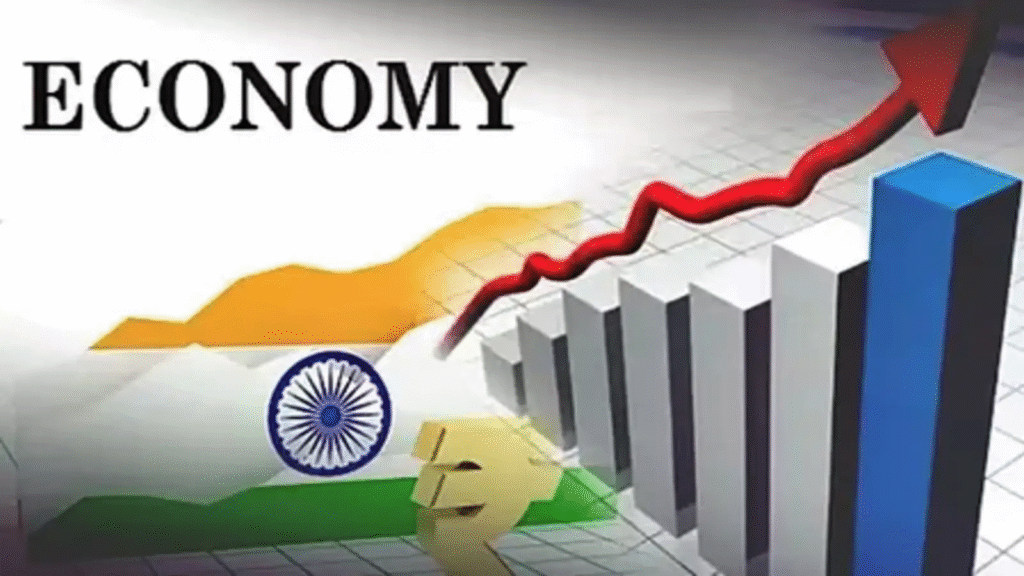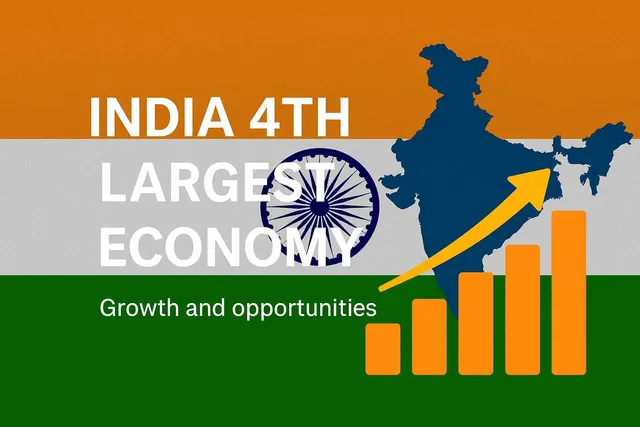
India’s economic standing has once again become a subject of national debate, following contrasting statements from key officials of the NITI Aayog. The controversy emerged when differing views were expressed on whether India has already ascended to the position of the world’s fourth-largest economy. While the CEO of NITI Aayog suggested an optimistic outlook, a member of the same institution painted a more tempered picture, sparking discussions across political, academic, and economic circles.
The Contradictory Statements: What Was Said?
In a recent address, NITI Aayog’s CEO confidently asserted that India has now overtaken Germany to claim the fourth spot in the global economic hierarchy. This statement was bolstered by data suggesting India’s impressive growth trajectory, fueled by robust GDP figures, increased industrial output, and a booming services sector. According to the CEO, India’s economic reforms, combined with its demographic advantage, have propelled the country into this prestigious position.
However, a member of the NITI Aayog presented a different narrative during a separate interaction. According to this member, while India’s economy is undoubtedly growing, it is premature to declare it the fourth largest in the world. Citing global rankings, they pointed out that GDP is not the sole measure of economic strength. Metrics like per capita income, human development index (HDI), and the depth of economic inequality also play significant roles in determining a nation’s true economic standing.
This disparity in views within the same institution has raised eyebrows, leading to speculation about the data sources and methodologies used to support these conflicting claims.
India’s Economic Growth: The Bigger Picture
India’s rise as a global economic powerhouse is indisputable. Over the past decade, the nation has witnessed a dramatic transformation in sectors ranging from information technology to manufacturing. Government initiatives like ‘Make in India,’ ‘Digital India,’ and significant infrastructure investments have created a conducive environment for growth.
The IMF and World Bank have often cited India as one of the fastest-growing major economies, with GDP growth consistently outpacing that of many developed nations. Despite global headwinds, including the COVID-19 pandemic and geopolitical tensions, India’s economy has shown remarkable resilience. This resilience is evident in the country’s increasing share of global trade, its growing stature in international forums, and the expanding footprint of Indian companies on the world stage.
However, a closer examination reveals challenges that temper this success story. Income inequality remains a pressing concern, with the wealth gap between the rich and poor widening. Additionally, India’s reliance on imports for critical sectors like energy and defense underscores vulnerabilities that could impact long-term growth.
The Metrics Debate: GDP vs. Comprehensive Indicators
At the heart of this controversy lies the question: what metrics should be used to evaluate a nation’s economic rank? While GDP offers a snapshot of economic output, critics argue that it provides an incomplete picture of economic health. For instance, countries with high GDPs but significant disparities in income distribution may not offer the same quality of life as nations with lower GDPs but better social equity.
The Human Development Index (HDI), which incorporates education, health, and income levels, offers a more nuanced perspective. Similarly, metrics like the Gini coefficient, which measures income inequality, and the Global Competitiveness Index provide additional dimensions to assess a country’s economic and social progress.
Furthermore, the Environmental Performance Index (EPI) and Sustainable Development Goals (SDG) Index are gaining importance in the global discourse on economic rankings. These indicators emphasize environmental sustainability and the equitable distribution of resources—critical factors in ensuring long-term growth and societal well-being. Incorporating such measures provides a holistic view of a nation’s achievements and challenges.
Global Comparisons: Where Does India Truly Stand?
According to the latest data, the United States, China, Japan, and Germany remain the top four economies globally in terms of nominal GDP. India, ranked fifth, is not far behind Germany. However, when adjusted for purchasing power parity (PPP), India ranks third, highlighting its significant cost-of-living advantage.
These rankings underscore the complexity of economic comparisons. While nominal GDP places India just outside the top four, the PPP measure emphasizes its large population and domestic consumption strength. Both perspectives are valid but highlight different aspects of economic power.
India’s global comparisons also bring attention to the significant role of exports in shaping its economic narrative. In 2023, India’s merchandise exports surpassed $400 billion for the second consecutive year, underscoring the country’s potential in sectors like pharmaceuticals, textiles, and information technology. Yet, challenges like trade deficits and dependency on energy imports remain areas of concern.
Policy Implications: The Road Ahead

The debate surrounding India’s economic rank is not merely academic; it has tangible policy implications. If India is indeed the fourth-largest economy, it strengthens its case for a greater role in global governance structures like the G20 and the United Nations Security Council. Such recognition could enhance India’s negotiating power on issues ranging from trade to climate change.
Conversely, if India’s rank is overstated, it risks complacency in addressing critical domestic challenges. Policymakers must focus on creating an inclusive growth model that benefits all sections of society. Investments in education, healthcare, and skill development are essential to translating economic growth into improved living standards.
The role of infrastructure development cannot be overstated. India’s ambitious projects, such as the Dedicated Freight Corridors (DFCs) and the expansion of its road and rail networks, aim to enhance connectivity and reduce logistical bottlenecks. By improving infrastructure, India can attract greater foreign direct investment (FDI) and boost its manufacturing sector—a critical driver of job creation.
Social Equity: A Pillar of Sustained Growth
One of the most pressing challenges in India’s economic journey is ensuring social equity. The rapid growth of urban centers has often come at the expense of rural development. Bridging the rural-urban divide is crucial to fostering a balanced economic landscape.
The government’s initiatives, such as the Mahatma Gandhi National Rural Employment Guarantee Act (MGNREGA) and the Pradhan Mantri Awas Yojana, aim to address disparities by providing employment opportunities and affordable housing. Additionally, schemes like Jan Dhan Yojana and Ayushman Bharat have brought financial inclusion and healthcare access to millions of underserved citizens. While these programs mark significant progress, their effective implementation remains a challenge.
India’s demographic dividend, often cited as its greatest strength, can only be realized through robust investments in education and skill development. The National Education Policy (NEP) 2020, with its focus on holistic learning and vocational training, holds promise in this regard. By equipping its workforce with the necessary skills, India can sustain its growth momentum and address unemployment concerns.
The Role of Media and Public Discourse
The contrasting statements from NITI Aayog officials have also highlighted the role of media in shaping public discourse. Sensational headlines and selective reporting can amplify differences, often obscuring the nuances of complex issues. Responsible journalism, coupled with informed public debate, is crucial to navigating such controversies.
Social media platforms, while democratizing information, have also contributed to the spread of misinformation. Ensuring the credibility of sources and encouraging constructive dialogue are essential to fostering an informed citizenry. Educational institutions, civil society organizations, and think tanks must play an active role in promoting media literacy and critical thinking skills.
Conclusion: A Balanced Perspective
India’s economic journey is a testament to its resilience, innovation, and ambition. While debates over rankings may grab headlines, they should not detract from the larger goal of sustainable and inclusive growth. As policymakers and citizens, it is essential to celebrate achievements while remaining cognizant of areas that need improvement. Only by embracing a holistic approach can India truly realize its potential as a global economic leader.
The contrasting claims from NITI Aayog officials serve as a reminder of the importance of transparency and accuracy in economic reporting. By prioritizing evidence-based policymaking and fostering a culture of accountability, India can ensure that its growth story benefits all segments of society. Whether ranked fourth, fifth, or beyond, the focus should remain on building an economy that reflects the aspirations and potential of its people.

